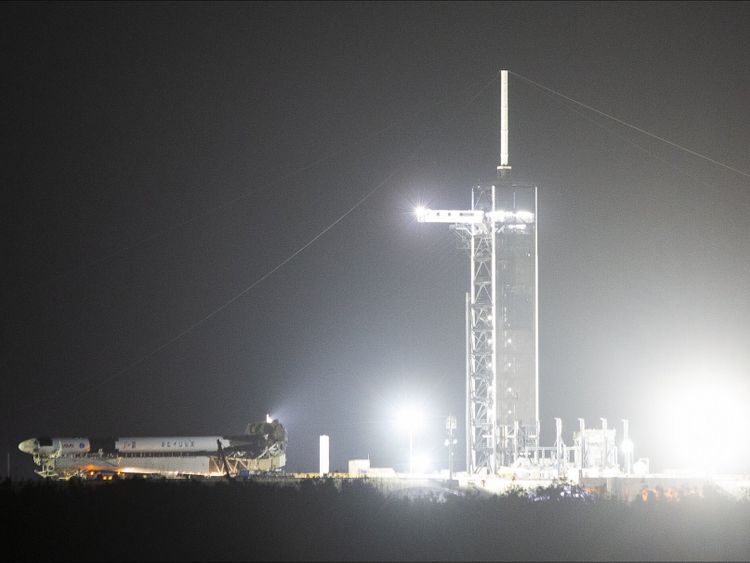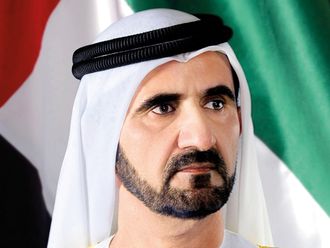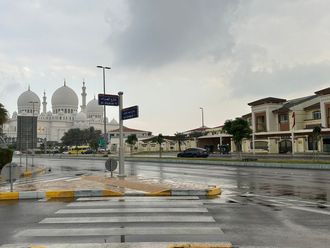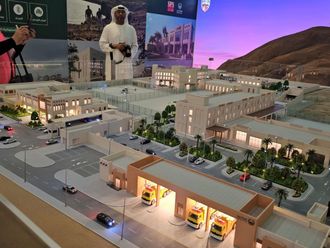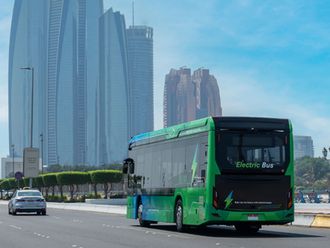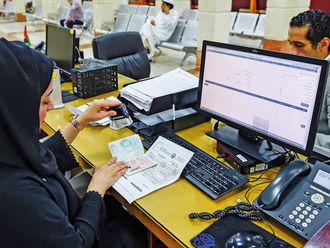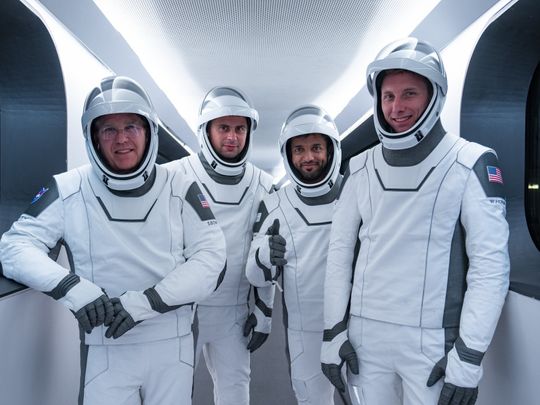
Dubai: Five years of literally astronomical work has gone behind what will be the lift-off of the first Arab to spend six months in space in just a couple of days.
However, when the UAE’s second astronaut Sultan Al Neyadi lifts off to the International Space Station (ISS) from NASA’s Kennedy Space Centre in Florida, US next week, he will be fulfilling a decades-old dream — that of a region, a nation and himself.
As we approach the new target date of SpaceX Crew-6 Dragon Endeavour’s lift-off on a Falcon 9 rocket on Monday, February 27, here is everything that the UAE residents need to know about history in the making in a country that you call home.
What is this mission?
This space mission is named UAE Mission 2. It is named so because this is the second time the country is sending an astronaut to space. In 2019, the first Emirati astronaut Hazzaa Al Mansoori spent eight days in the ISS in the first mission.
The UAE has always taken pride in the fact that its founding father, the late Sheikh Zayed bin Sultan Al Nahyan, had a thirst for scientific knowledge and a vision and dream to send his country to space. Keeping that legacy in mind, the country’s first astronaut mission carried the slogan “Zayed’s Ambition.”
The second mission has a logo that depicts an astronaut wearing the spacesuit and looking at a drawing of Sheikh Zayed.
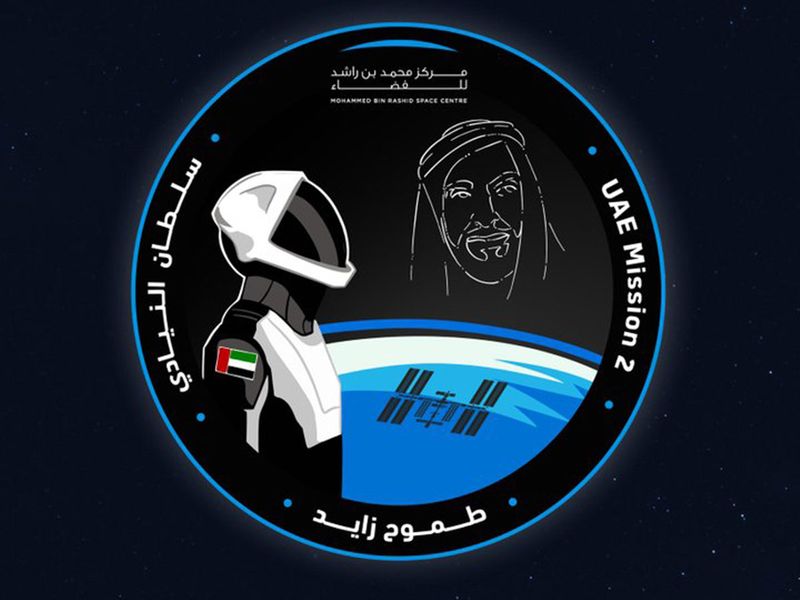
Upon the completion of this mission, the UAE will rank 11th globally among countries that have successfully achieved a long-duration mission at the ISS. It will also become the first Arab country to hit this milestone. The UAE is also the first non-ISS partner country to participate in a long-haul ISS mission.
Who is Sultan Al Neyadi?
Al Neyadi, 41, whose full name is Sultan Saif Hamad Al Neyadi, is an IT engineer hailing from Al Ain. He used to work as the Network Security Engineer for the UAE Armed Forces. He is a PhD holder in Information Technology (Data Leakage Prevention) and an author of six research papers.
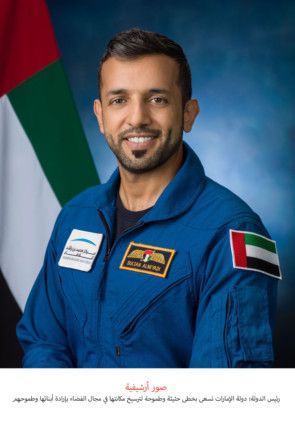
Though Al Neyadi found himself drawn to engineering, and spent 20 years serving in the military, he never let go of his childhood dream. It was his dream to become a pilot and an astronaut, though in his youth he had never imagined his dream would ever come true.
His space dream got wings to fly when the Mohammed Bin Rashid Space Centre (MBRSC) in Dubai invited applications from Emiratis for the UAE Astronaut Programme in 2018.
He was selected along with Hazzaa Al Mansoori to form the first batch of Emirati astronauts. Al Neyadi was later chosen as the backup for Al Mansoori in the first mission.
In July 2022, the UAE President His Highness Sheikh Mohamed bin Zayed Al Nahyan and His Highness Sheikh Mohammed bin Rashid Al Maktoum, Vice President and Prime Minister of the UAE and Ruler of Dubai, announced the selection of Al Neyadi to participate in the first long-duration Arab astronaut mission.
Why is Al Neyadi called a “Najmonaut?”
Najmonaut is a word coined to refer to an Arab astronaut. Najm in Arabic means star and the UAE’s star astronaut is now referred to as a najmonaut and is popularly known as the “Sultan of Space.”
Since 2018, he has undergone various training programmes at astronaut and cosmonaut training facilities under Nasa and other entities in various countries. In 2021, he became officially certified to work as an operator on-board the ISS.
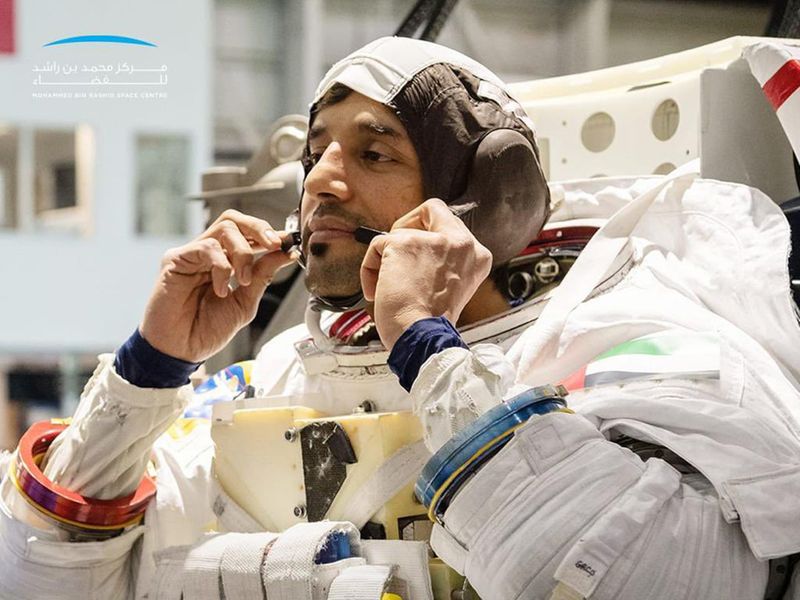
Al Neyadi completed his training for the long-haul mission at NASA’s Neutral Buoyancy Laboratory (NBL). Al Mansoori is his backup crew this time.
Al Neyadi could also be possibly the first ‘najmonaut’ to perform the first spacewalk. His training included spacewalks, robotics and science experiments.
The father of five has successfully completed the dry dress rehearsal for the launch and is continuing preflight quarantine and training along with the other crew members at the Kennedy Space Centre while his family members are also in Florida to watch him lift off.
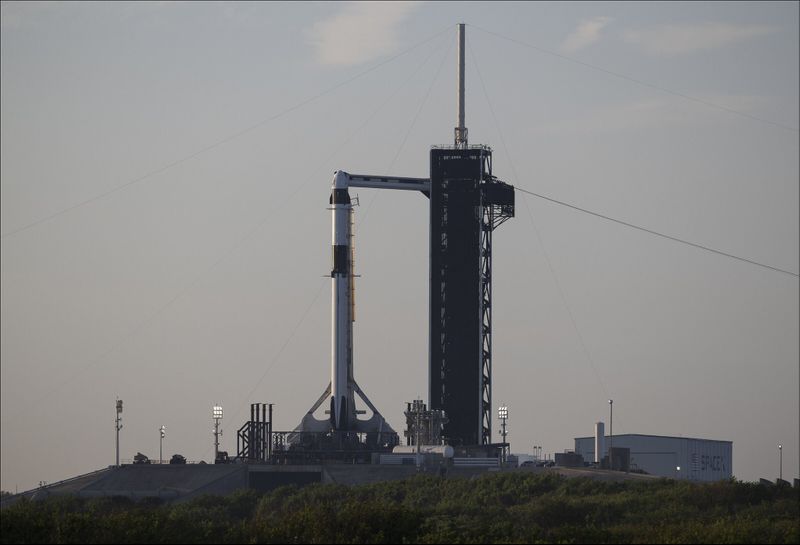
What is Crew-6 mission?
It is a four-person astronaut mission to the ISS on a Crew Dragon spacecraft from Elon Musk’s spacecraft manufacturer Space Exploration Technologies Corp (SpaceX). The spacecraft or the capsule is named Endeavour. It will be lifted off to the space by SpaceX Falcon 9 rocket. Crew-6 is a joint mission of Nasa and SpaceX. The flight is NASA’s sixth crew rotation mission with SpaceX to the space station, and the seventh flight of Dragon with people as part of NASA’s Commercial Crew Programme. It is the ninth overall crewed orbital flight.
Crew-6 will spend up to six months at the space station before returning to Earth.
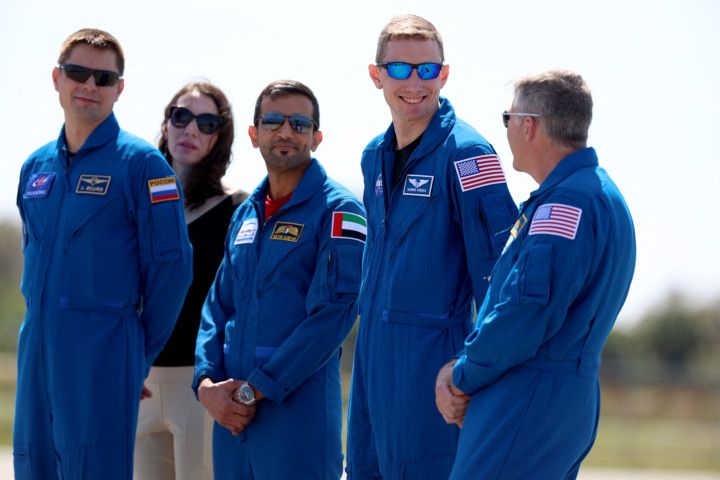
Who all are part of Crew-6?
The Crew-6 launch will carry two Nasa astronauts from the US, Mission Commander Stephen Bowen and Pilot Warren “Woody” Hoburg, along with UAE astronaut Sultan Al Neyadi, and Roscosmos cosmonaut Andrey Fedyaev of Russia, who will serve as mission specialists for Expedition 69, the 69th long-haul expedition in ISS.
Since 2000, the space station has never been without astronauts on board. The members of Crew-6 will join the seven astronauts currently in the ISS for Expedition 68. Some of them will return to Earth after the arrival of Crew-6.
What is special about Crew-6 logo?
The names of all four crew members have been written in their mother languages in the design chosen for the Crew-6 logo. Al Neyadi’s name in Arabic is what makes the logo extra special for the Arab region. Nasa explains the design of the logo as below.
Sailing across the Crew-6 patch, the ship represents both our destination, the International Space Station, and the vessels that countless explorers have steered into the unknown. The station anchors us on the dawn of missions to the Moon and Mars. The ship’s sail, a symbol of the 2012 cosmonaut class, has relative radii matching those of the Earth, the Moon, and Mars. The Draco constellation represents NASA’s Commercial Crew Programme and shares a name with the thrusters that manoeuvre our Dragon spacecraft. The ship’s Dragon figurehead looks to the future as we also look back at Earth, grateful for the tireless hours of all who support our mission.
Read More
- How UAE’s Astronaut Programme demonstrates country’s boundless ambitions
- Rocket flying UAE astronaut Al Neyadi to space rolled out to Nasa launchpad, what happens next?
- From Al Ain boy to ‘Sultan of Space,’ here is all about UAE astronaut Sultan Al Neyadi
- UAE Mission 2: Launch rehearsal, rocket test complete for UAE astronaut Al Neyadi’s space mission
What is Al Neyadi’s role in Crew-6?
Al Neyadi is a mission specialist and primary crew of the SpaceX Crew-6. Once aboard the ISS, he will be the flight engineer. He will spend six months in the orbiting laboratory during which he will carry out almost 20 experiments.
The scientific projects that the team would carry out span a wide range of disciplines — from life and physical sciences to advanced materials, technology development, in-space production applications, and even student-led research.
“Results from these studies will bring value to humanity, further our ability to explore, and enable a robust market in low Earth orbit,” stated ISS National Laboratory which will sponsor dozens of these investigations.
MBRSC has released top 10 topics covered in the scientific experiments that will be part of the first Arab long-duration space mission.
The fields of experiments include: cardiovascular system, epigenetics, plant biology, radiation, back pain, immune system, materials science, sleep analysis, fluid science and technical demonstration.
Adnan Al Rais, mission manager, UAE Astronaut Mission 2, said the scientific community in the UAE, including researchers and students, will take part in the mission through an educational and outreach programme.
MBRSC and the Emirates Literature Foundation also has a joint venture through which Al Neyadi will interact with students from space. It will be through live or recorded sessions that will be streamed on a website, according to Salem Humaid Al Marri, director general of MBRSC.
When is the lift-off?
As of print time, the new target for the lift-off of SpaceX Falcon 9 with Crew-6 is Monday, February 27. It will take place at the Launch Complex 39A (LC-39A) at the Kennedy Space Centre in Merritt Island, Florida. LC-39 A is the first of Launch Complex 39’s three launch pads.
The live telecast of the launch will begin from 7am UAE time while the lift-off is expected to happen at 10:45am here. MBRSC and Nasa will stream it live. There will be a special screening at MBRSC.
Weather officials have predicted a 95 per cent chance of favourable weather conditions for the launch on Monday, with the cumulus cloud rule serving as the primary weather concern.
If there is any further delay, the backup launch dates as of now are February 28, March 2,3 and 4.
Why are space missions important?
The direct benefits of space exploration include the generation of scientific knowledge, the diffusion of innovation and creation of markets, the inspiration of people around the world, and agreements forged between the countries engaged in exploration, according to Nasa.
GPS, precise weather forecasting, solar cells, ultraviolet filters in sunglasses and cameras and many other things that make our lives smooth and safe would not have existed without space projects. Medical research conducted in space may be able to treat illnesses and lengthen human lives. Many of these experiments cannot be carried out on Earth.
From becoming the first Arab nation and fifth country ever to reach Mars and the first Arab country to build and launch a Moon rover, the UAE has made incredible strides in space. The country’s
Astronaut Programme is yet another demonstration of its leadership’s boundless ambitions to contribute to this sector.


